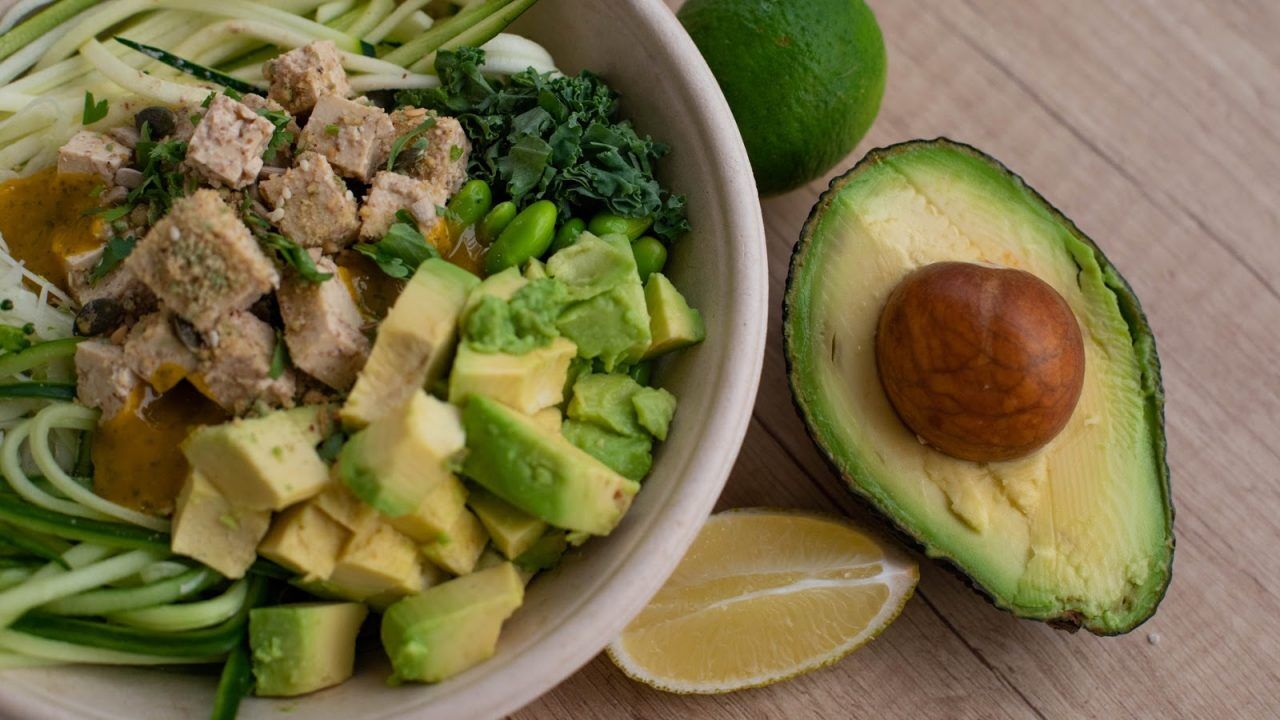It is often the case that the most delicious foods are also the worst for our health. And even if we know that our favorite fast food can increase our risk for heart disease, our craving often wins and we throw caution to the wind.
Changing how we eat and adopting a heart-healthy diet can be different kinds of tough, and if you’ve always had a devil-may-care attitude when it comes to your food choices, doing a complete one-eighty will literally be a complete life-changer. Whether you’re finally willing to give your heart the love and care it deserves or simply wish to fine-tune your eating habits for better heart health, this guide will get you on the right track.

Tips for a Heart-Healthy Diet
Portion Size
Excessive consumption of carbohydrates, added sugars, saturated fats, trans fats, and/or sodium is the biggest contributor to heart disease risk. The correlation between the supersized meals of the west and the prevalence of obesity and heart disease is well-established.
Controlling how much you eat is a good first step towards having a heart-healthy diet. Visual cues are very powerful when it comes to food, so you can easily trick yourself into satiety by using a small bowl or plate when eating – you can fill it up to create the illusion that you’re eating a lot.
The Mayo Clinic suggests eating larger portions of foods that are low in calorie density and loaded with nutrients to fill up and to smaller portions of foods high in calories, fats, and sodium. Tip the scale towards healthier food options, if you can’t skip the sinful ones.
Familiarize yourself with serving sizes and learn the recommended number of servings per food group so you can keep track of your portion sizes.
Load Up on Fruits and Vegetables
Eating more plant foods is not only beneficial in terms of the vitamins and minerals they deliver; you will also benefit from the substances that are specifically good for the heart. Most fruits and vegetables are also high in fiber and water, which makes them more filling. If you eat a lot of them, you’ll be less likely to overeat unhealthy foods.
Add Whole Grains to Your Diet
Whole grains that you should add to a heart-healthy diet include whole-wheat flour; whole-grain bread, preferably 100%; high-fiber cereal with 5 g or more fiber per serving; whole grains such as brown rice, barley, and buckwheat; whole-grain pasta; regular or steel-cut oatmeal. Keep to a minimum or avoid refined grain products such as pastries, pies, and crackers.
Minimize Consumption of Unhealthy Fats
Saturated and trans fats have been linked with high blood cholesterol levels which, in turn, can result in plaque buildup in the arteries and increase risk of heart disease and stroke.
According to the American Heart Association, a heart-healthy diet of 2,000 calories a day should contain no more than 6% or 13 grams of saturated fat. You can limit your consumption of trans fats by choosing lean meats with less than 10% fat, trimming off the fat from your meats, and using the minimum amount or avoiding butter, margarine, and shortening.
Avoid food products that contain “partially hydrogenated” ingredients. Opt for low-fat substitutes whenever possible, such as low-fat yogurt for butter. Use monounsaturated fats (olive oil and canola oil) and polyunsaturated fats (avocados, nuts, and seeds) in moderation for a heart-healthy diet.
Focus on Low-Fat Protein
Even when loading up on protein, make sure to choose low-fat protein sources. Aside from lean meat, poultry, dairy products, and eggs, other excellent sources of low-fat protein include cold-water fish, such as herring, mackerel, and salmon. These fish are also high in omega-3 fatty acids, which can also be found in flaxseed, walnuts, soybeans, and canola oil.
Legumes are great meat substitutes – they’re high in protein, low in fat, and have zero cholesterol. Substitute plant protein for animal protein whenever possible.
Minimize Sodium Intake
A high-sodium diet contributes to increased blood pressure, which can increase your risk for cardiovascular disease. According to the American Heart Association, most adults should limit sodium intake to no more than 1,500 milligrams a day; healthy adults can consume up to 2,300 milligrams a day.
Processed foods contain a lot of salt, so these should be avoided or consumed infrequently and in minimal amounts. Eat fresh foods and prepare your own soups, stews, and baked goods so you can have better control of your sodium intake.
Watch out for some products that supposedly contain “less sodium” as these usually use sea salt, which has the same nutritional value as table salt. You can season your meals with fresh herbs and spices instead of salt.
The Best Heart-Healthy Diet Starts at Home
Knowing what foods to avoid and limit and what foods to eat more of is only the first step. Use this knowledge to prepare a heart-healthy weekly menu and shopping list. Preparing your own meals is the best way to ensure that what goes into each one is good for your heart and overall health.
Planning ahead significantly reduces the risk of overeating and indulging in foods that are not good for you. It will also allow you to add variety to your meals; a heart-healthy diet can still be enjoyable and delicious once you learn how to play around with the right ingredients.
Lastly, even the best heart-healthy diet should not deprive you of some of your guilty pleasures. As long as you consume them in moderation and only occasionally, you can indulge in a slice of cake or a handful of potato chips. As long as you eat heart-healthy foods most of the time, an occasional treat will not ruin your carefully planned diet.
